by Klaus Schroiff, published July 2019
Introduction
While mirrorless systems have been around for quite some time, the uptake by the “big 3” third-party lens manufacturers was neither fast nor overly broad. Of course, in the end, it is a number game. The DSLR user base is still massive in comparison but the tide has finally turned and the flood is coming in now – especially for Sony E-mount. Tamron was the first of the big 3 with the release of a full format E-mount lens – the Tamron 28-75mm f/2.8 Di III RXD in 2018. While the paper-spec may feel familiar, it has no design relationships with the older DSLR version. Interestingly, Tamron was caught on the wrong foot because they weren’t able to fulfill the initial demand (and history seems to repeat itself with the new 17-28mm f/2.8 Di III RXD) – which isn’t all that surprising because Sony’s pricing policy leaves the door wide open to alternatives. The Tamron 28-75mm f/2.8 Di III RXD has a price-tag around the 800EUR/900USD mark which is less than half the amount you have to pay for Sony’s own 24-70mm f/2.8 GM. However, a more realistic competitor is probably the Zeiss Vario-Tessar 24-70mm f/4 OSS ZA.
In terms of build quality, it is more on the consumer-grade side of the game. This doesn’t mean that the quality is bad, it’s just not on Sony GM level. The longish, yet slim Tamron lens is based on a smooth plastic body on a metal mount. The rubberized control rings operate smoothly. Typical for most standard zoom lenses, it extends when zooming towards the long end of the range. There is no wobbling of the inner lens tube even at 75mm. Tamron does point out that the construction is moisture resistant. A petal-shaped lens hood is supplied.

The RXD in the lens name stands for “Rapid eXtra-silent stepping Drive” thus the AF motor. It is indeed pretty quick as well as silent. Typical for Sony FE lenses, manual focusing works by wire and is pretty precise. It’s worth mentioning the lens is designed to provide an unusually high object magnification of 1:2.9 (at 28mm) to 1:4 (at 70mm). While you shouldn’t expect wonders in terms of close-focus performance, this may come handy at times. An optical image stabilizer is not provided but, of course, available via most Sony cameras.
| Specifications | |
|---|---|
| Optical construction | 15 elements in 12 groups inc. 1x molded aspherical, 1x hybrid aspherical, 1x LD and 1x XLD |
| Number of aperture blades | 9 (rounded) |
| min. focus distance | 0.19-0.39m (max. magnification 1:2.9-1:4) |
| Dimensions | 73×117.8mm |
| Weight | 550g |
| Filter size | 67mm |
| Hood | petal-shaped (bayonet mount, supplied) |
| Other features | moisture resistant |
| Mount | Sony FE |
Distortion
With activated image auto-correction, you don’t really have to worry about image distortions. They are near-zero as you can see below.
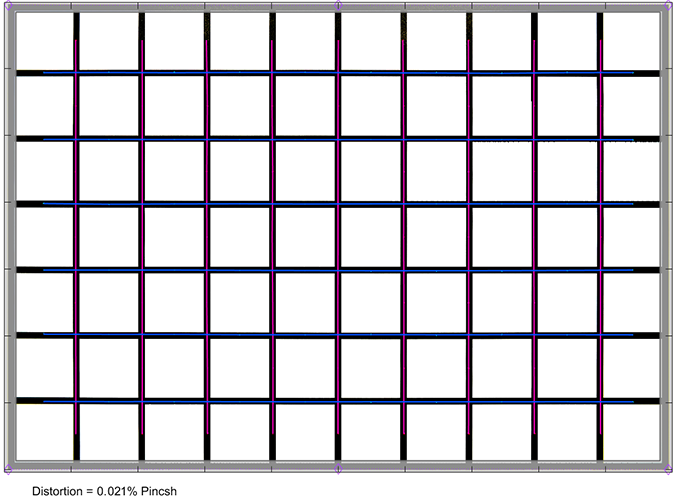
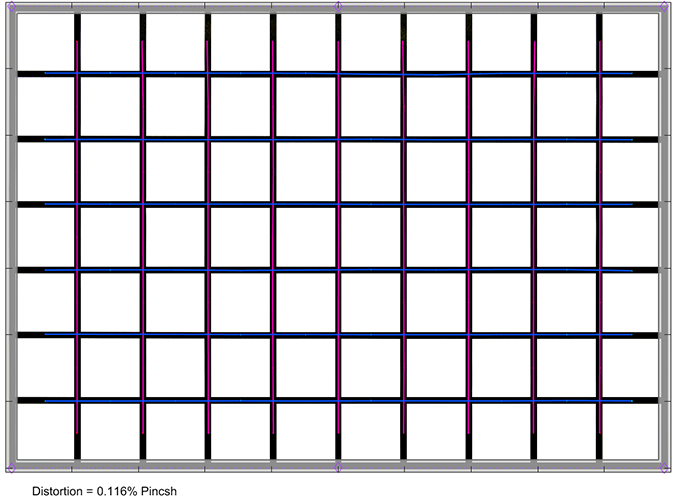
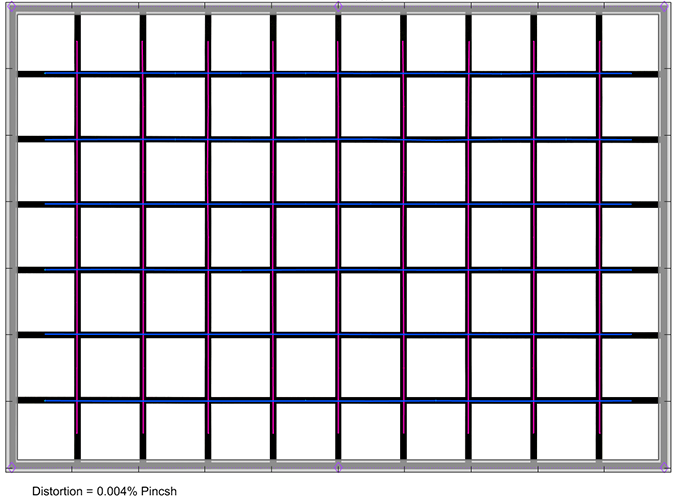

When looking at the RAW characteristic, the situation is slightly worse but still very acceptable for a standard zoom lens.
The lens shows a slight barrel distortion at 28mm and medium pincushion distortions at 75mm. In between the distortions are negligible.
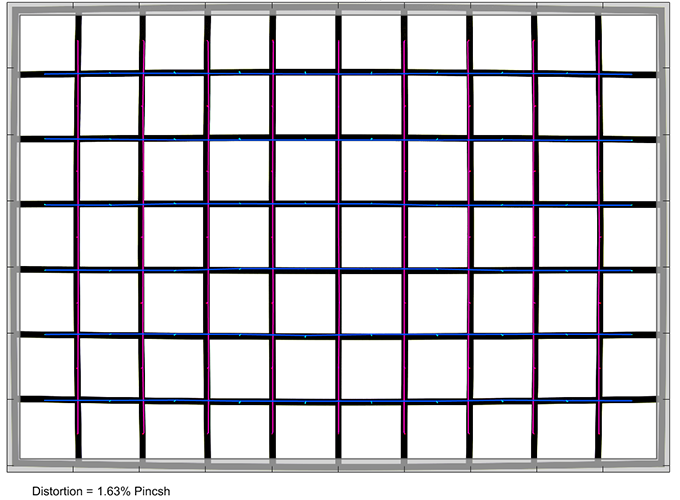

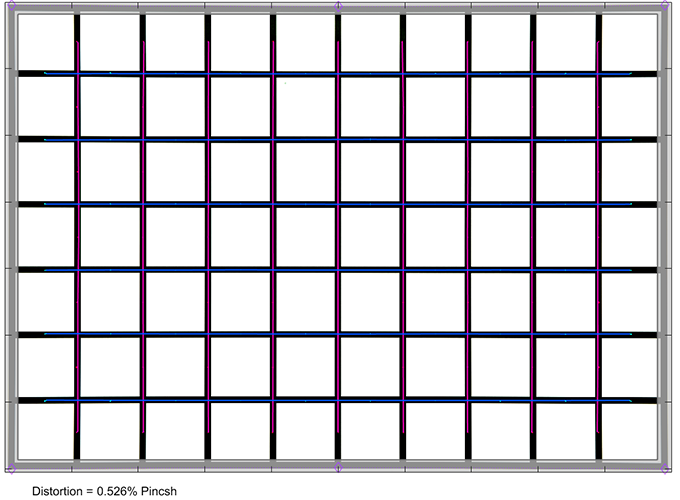
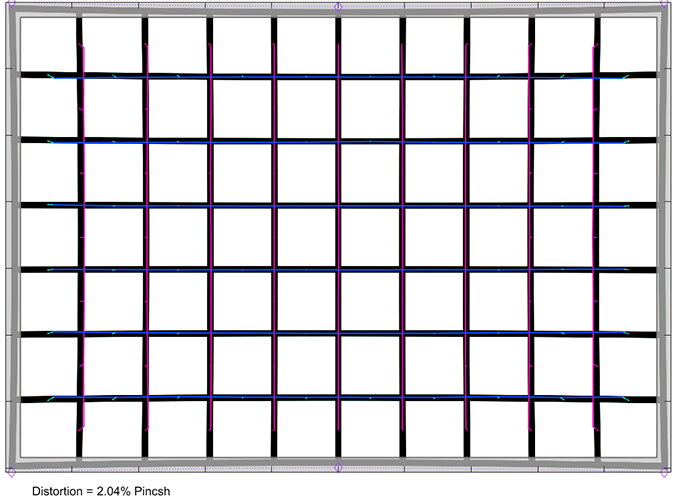
Vignetting
In standard shooting mode – thus with activated image auto-correction – the vignetting is quite well controlled with a maximum of about 1.2EV (f-stops) at the extreme ends of the zoom range. This may be slightly visible in some scenes but if needed, just stop down a little bit. The light-falloff is comparatively low in the middle range.

When looking at the RAW image, the native vignetting is much more obvious with a very heavy light falloff at the extreme ends. It reveals that the rather small diameter of the lens elements is taking its toll here. You have to stop down till at least f/5.6 till the issue is reasonably resolved at 28/75mm. The middle range is, once again, not quite as affected by this.
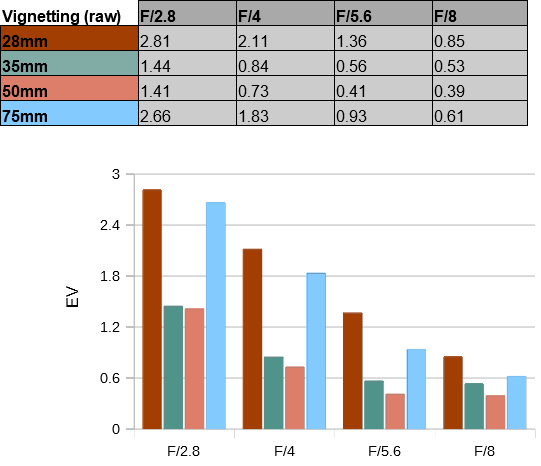
MTF (resolution at 42 megapixel)
While standard zoom lenses are certainly the most popular lens category they are also the most difficult to design – especially when it comes to large aperture variants. It doesn’t matter whether it’s about an expensive original manufacturer lens or a third-party offering – they all have their flaws. Thus, unsurprisingly, it’s no different with the Tamron 28-75mm f/2.8 Di III RXD. Let’s start with the most positive aspect – the broader center performance. Tamron managed to provide a superb quality here which exceeds most other lenses that we have tested on Sony E-mount to date. That’s regardless of the zoom setting. However, the glory ends when looking at the image borders/corners. At 28mm they are quite soft at f/2.8 but they recover when stopping down. The border quality is decent from f/5.6 whereas you better stop down to f/8-11 for good corner quality. At 35mm the border quality improves whereas the corners remain soso at wide-open aperture. The 50mm setting is the sweet spot with a quite homogeneous performance for a zoom lens at least. The quality of the outer region drops again at 75mm with rather weak results at f/2.8 and fairly good from f/5.6 onward.
The field curvature is minimal. The centering quality of the tested sample was good.
Please note that the MTF results are not directly comparable across the different systems!
Below is a simplified summary of the formal findings. The chart shows line widths per picture height (LW/PH) which can be taken as a measure for sharpness. If you want to know more about the MTF50 figures you may check out the corresponding Imatest Explanations

Chromatic Aberrations (CAs)
Once again – on Sony cameras, you don’t really have to worry about chromatic aberrations due to image auto-correction. However, even if you prefer to disable this for whatever reason, the CAs are very low at around 0.6px on the average at the image borders.

Bokeh
When investing in a fast lens, you usually do so for shallow depth-of-field photography. Thus beyond the primary characteristics, the bokeh (rendition of the out-of-focus blur) is a major factor. To be honest – standard zoom lenses tend to struggle here due to the generous use of aspherical elements in the design – and the Tamron 28-75mm f/2.8 Di III RXD is no exception to the rule.
The background blur (shown to the left below) is about average for a lens in this class. High contrast transitions can be a little rough (e.g. the crown). The foreground blur is quite smooth.

Highlights, well, they are not good at f/2.8. That is unless you like bubbles (there were Kickstarter campaigns where this was mentioned a feature actually …). However, if you just stop down a little, the bubbles are actually gone. The inner zone of the highlight discs isn’t totally clean but not too bad.

The highlights are never getting any better to the image borders and combined with the bubbles at f/2.8, it can hurt a little … However, once again – just stop down 2/3 f/stops and things are much better here as well.

The shape of the outer “discs” changes when stopping down. Below is a visualization of this transition. Please note that this is completely normal to some degree. The “cat eyes” are a vignetting effect due to the limited diameter of the lens barrel.
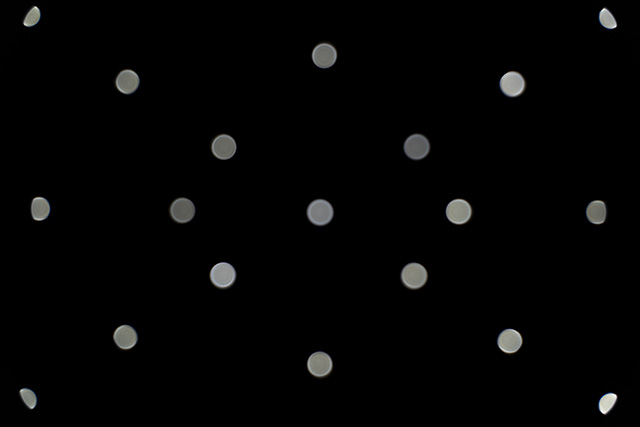
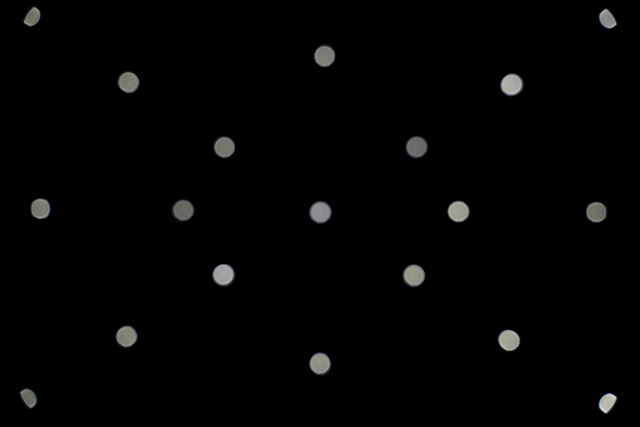
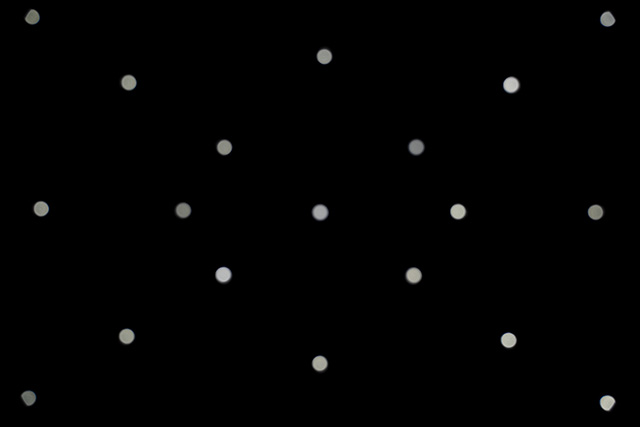
Bokeh Fringing / LoCA
Bokeh fringing describes chromatic aberration on the Z-axis with greenish halos beyond the focus point and purple halos in front. Typically this kind of fringing is visible on very fast lenses till about f/2.8. Below you may also spot fringing traces at this setting but they are mostly gone from f/4 (shown at 75mm).

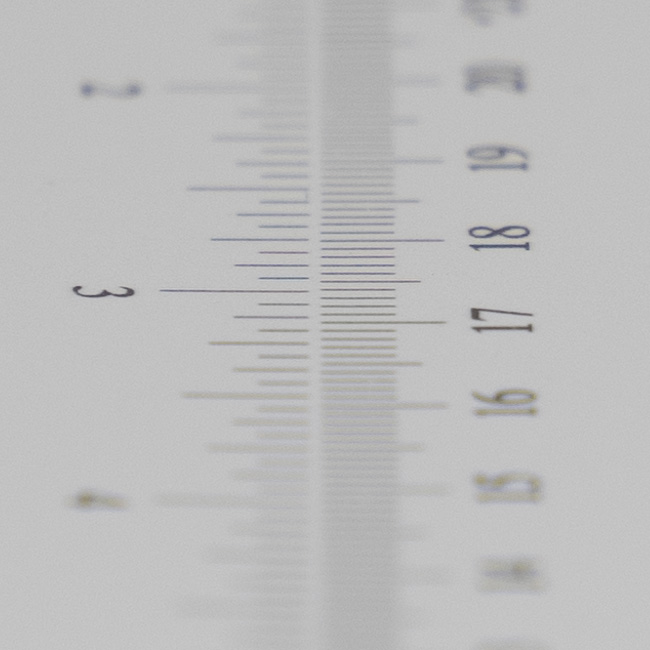

Sample Images
Competition
As of the time of this review, the Tamron 28-75mm f/2.8 Di III (left) only battles against the 3 prosumer/pro Sony lenses. A major advantage of all Sony lenses is the wider 24mm setting. The 28mm wide end on the Tamron feels a bit like coming from the 90s. As mentioned in the introduction, the Sony 24-70mm f/2.8 GM (2nd from the left) is in a different price league. Unsurprisingly it is also somewhat better albeit it’s not lightyears ahead. A more natural competitor due to its similar pricing is the Zeiss Vario-Tessar 24-70mm OSS GM (3rd from the left). The Zeiss lens struggles at 24mm but should actually be fairly similar at 28mm and beyond. Obviously, it is slower but offers optical image stabilization. The Sony 24-105mm f/4 G OSS (to the right) is somewhat more expensive and surprisingly good given its much bigger zoom range – and our usual recommendation.

Visual comparison courtesy of camerasize.com.
It is easy to spot why the Tamron 28-75mm f/2.8 Di III RXD is so popular. There is, of course, the moderate price tag combined with the fast max. aperture which sets it apart from Sony offerings. Optically it is decent - for such a lens - albeit it comes with a couple of carefully placed compromises. At the wide-end of the zoom range, it is quite sharp across the image frame when stopped down to medium aperture settings whereas the center performance remains superb at 75mm which is where you'd typically use a large aperture setting anyway. Thus the mainstream settings are offering quality where usually needed the most and you will probably agree that most of the provided sample images actually look very decent. That being said, technically there are also obvious weaknesses when using the lens on a high megapixel camera. The corner performance isn't all that hot at large-aperture settings and for a sharp result across the frame, you should stop down to f/8 or f/11. While you can certainly achieve decent object isolation via a shallow depth-of-field, the quality of the bokeh can be quite rough in difficult scenes - when shooting at f/2.8 at least. As far as image distortions, vignetting and CAs are concerned, most users will rely on image auto-correction thus you can live happily ever after. If you look behind the scenes - thus into the unmodified RAW image - you can spot medium distortions at the extreme ends. Lateral CAs are fairly low at the image borders but intensify in the extreme corners. The vignetting is also high at 28mm f/2.8 and 75mm f/2.8 albeit this isn't unusual in this class.
The build quality is on a very decent consumer-grade level. We are not convinced that the smooth finish will stand the test of time without scratches but out-of-the-box it certainly looks good (albeit a bit long-ish). An annoyance is the tendency of the rubberized zoom ring to function as a dust-magnet in no time. The moisture-resistant design is certainly a plus. A highlight is the fast and silent RXD AF motor. Some users will surely also appreciate the close focus capabilities of the lens which is a classic value-add on many Tamron lenses.
If you can't or don't want to afford the Sony FE 24-70mm f/2.8 GM but still want an f/2.8 standard zoom lens, the Tamron is a good and light-weight option IF you can live with the rather moderate 28mm setting at the wide-end.
-
Optical Quality
-
Build Quality
-
Price / Performance


